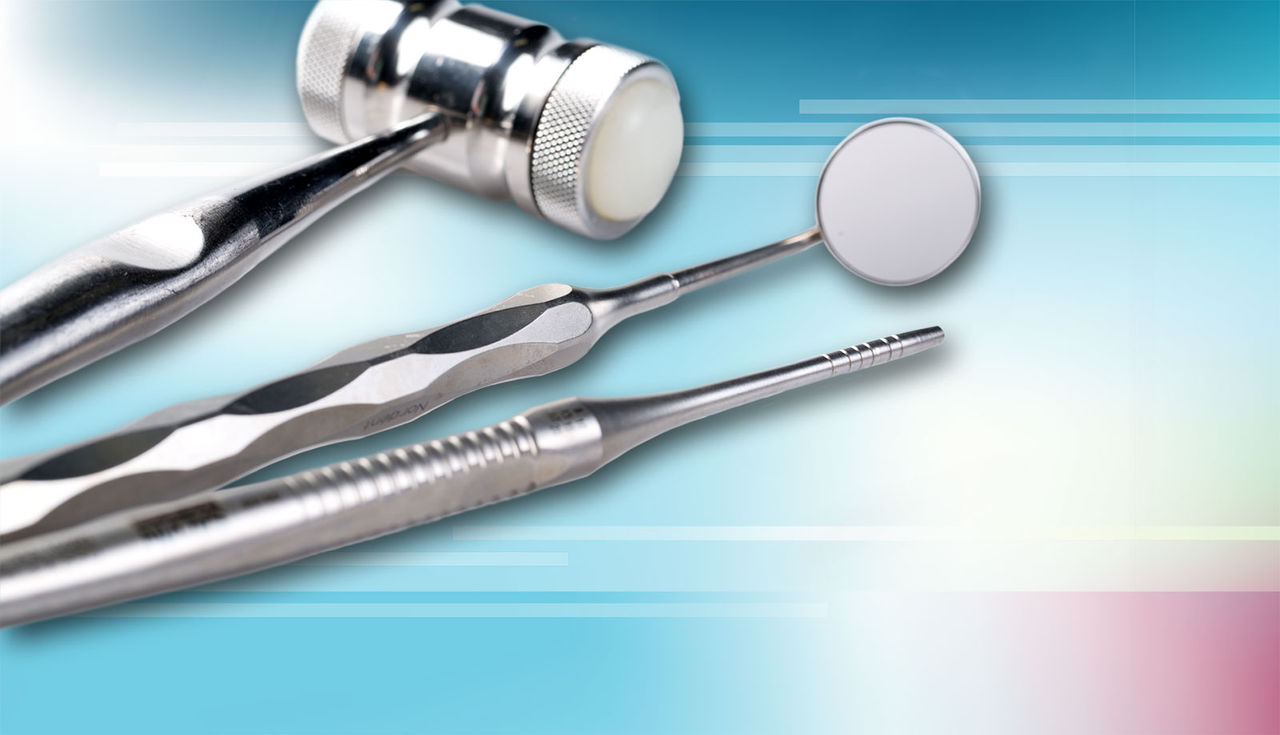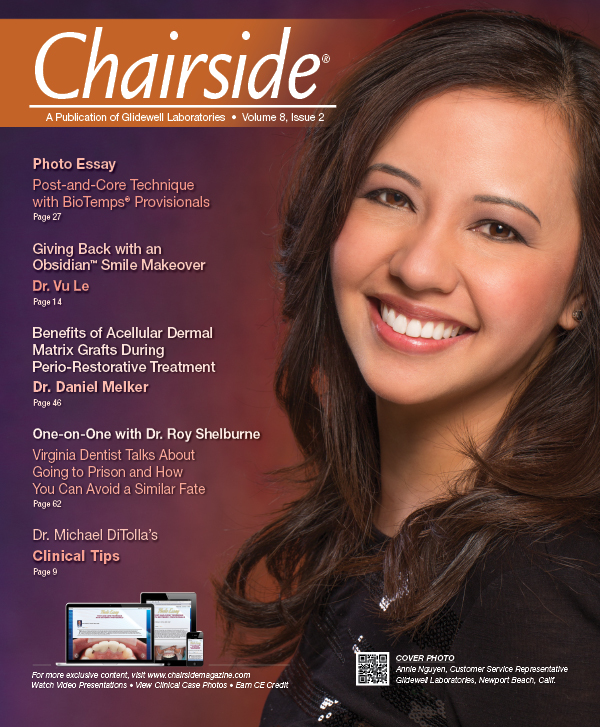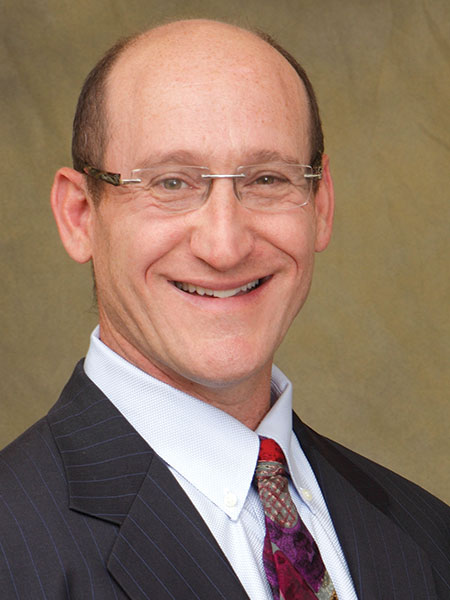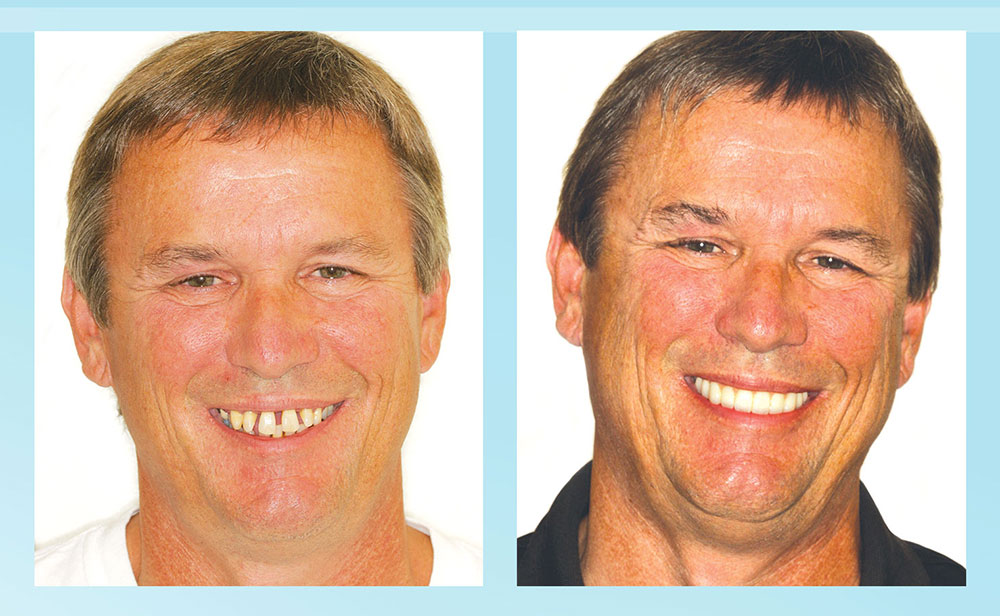General Dentistry as a Specialty

Note from the Editor: In this prosthetically driven case for the full-mouth rehabilitation of a patient with advanced periodontal disease, Dr. Richard Winter takes a sequential approach to treatment that involves three sets of temporary restorations, allowing the patient the comfort and convenience of maintaining fixed provisionalization during the prolonged healing period. He uses maxillary and mandibular BioTemps® provisional restorations (Glidewell Laboratories; Newport Beach, Calif.), BioHorizons® Tapered Internal Implants, PEEK temporary abutments and 3inOne abutments (BioHorizons; Birmingham, Ala.) to accomplish a successful full-mouth reconstruction with implants and fixed porcelain bridges.
Preface
Definition: Dentistry is defined as the evaluation, diagnosis, prevention and/or treatment (nonsurgical, surgical or related procedures) of diseases, disorders and/or conditions of the oral cavity, maxillofacial area and/or the adjacent and associated structures and their impact on the human body; provided by a dentist, within the scope of his/her education, training and experience, in accordance with the ethics of the professional and applicable law (as adopted by the 1997 American Dental Association [ADA] House of Delegates).1
Introduction
Dentistry is an evolving art and science that can be a challenging discipline made more difficult if we do not work to constantly elevate our care, skill and judgment. The nine “specialties” of general dentistry, as recognized by the Council on Dental Education and Licensure within the ADA, create these specialties to define areas they feel require additional study or examination to perform at a definable level beyond that of a “generalist.” That being said, the practice of general dentistry and training received in dental school can hardly be sufficient to practice in today’s rapidly changing environment. Even board-certified specialists cannot rest on the laurels of their specialty certificate, especially if it was attained several years ago, since the research and advancements in dentistry have been enormous in scope over the last several years. If we, as general dentists, must perform all facets of dentistry and be held accountable — for legal, moral and ethical reasons — to the level of a specialist within the nine board-certified specialties, then it can be said that we must be specialists within our field.
There is tremendous political pressure to fight licensure by credential, dental implantology as a specialty,2 facial cosmetic enhancement with dermal fillers or cosmetic dentistry as a specialty, to name just a few of the hotbed issues within our field. It is beyond the scope of this article to address these issues; however, to aspire to treat our patient demographic in the most professional and responsible manner, general dentistry should be thought of as a “specialty.” The result of increased continuing education within and beyond the labeled specialty designations will result in a renewed joy within our profession, as well as a deep gratitude within our patient base and strengthened collaboration with our colleagues with board certifications.
Acknowledgment
The author would like to thank Leonard Machi, DDS, for the surgical expertise he provided as well as the mentorship in treatment planning necessary in this case.
Suggested Reading
- Bidra AS, Shaqman M. Treatment planning and sequencing implant therapy in a young adult with generalized aggressive periodontitis. J Oral Implantol. 2010 Nov 1. [Epub ahead of print]
- McCracken M, Simmons B, Simmons W. Cement-retained superstructure for a metal-resin fixed complete denture. J Prosthet Dent. 2005 Mar;93(3):298-300.
- Peñarrocha M, Boronat A, Garcia B. Immediate loading of immediate mandibular implants with a full-arch fixed prosthesis: a preliminary study. J Oral Maxillofac Surg. 2009 Jun;67(6):1286-93.
- Truninger TC, Philipp AO, Siegenthaler DW, et al. A prospective, controlled clinical trial evaluating the clinical and radiological outcome after 3 years of immediately placed implants in sockets exhibiting periapical pathology. Clin Oral Implants Res. 2011 Jan;22(1):20-7. [Erratum in: Clin Oral Implants Res. 2011;22(2):235.]
Dr. Winter has authored several articles on upgradeable dentistry and related topics. His lecture topics include “General Dentistry as a Specialty,” “Upgradeable Dentistry” and “How to Recession Proof Your Practice.” He is a consultant for Dental Health Libraries, a nonprofit internet-based health library. He can be reached via email at rick@winterdental.com.
Disclosure: Dr. Winter receives material support from BioHorizons and Glidewell Laboratories.
Reprinted by permission of Dentistry Today, ©2012 Dentistry Today.
References
- ^American Dental Association. Definition of Dentistry. Available at: http://ada.org/495.aspx. Accessed June 24, 2011.
- ^Advocacy: What the AGD has done for you lately. AGD Impact. Available at: http://agd.org/publications/articles/?ArtID=7011. Accessed June 24, 2011.
- 2010 Guidelines of the Academy of Osseointegration for the provision of dental implants and associated patient care. Int J Oral Maxillofac Implants. 2010 May-Jun;25(3):620-7.
- Winter R. Upgradeable dentistry, Part 1. Dent Today. 2009 Jun;28(6):82, 84, 86-7.
- Zitzmann NU, Krastl G, Hecker H, et al. Strategic considerations in treatment planning: deciding when to treat, extract or replace a questionable tooth. J Prosthet Dent. 2010 Aug;104(2):80-91.
- Winter R. Upgradeable dentistry, Part 4. Dent Today. 2009 Dec;28(12):64, 66, 68.




